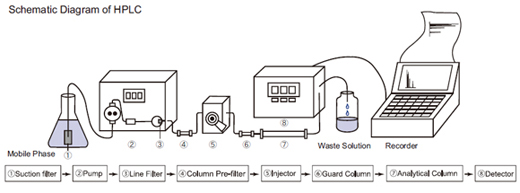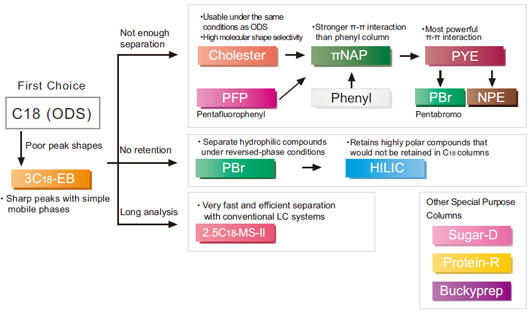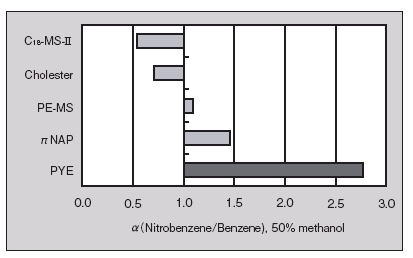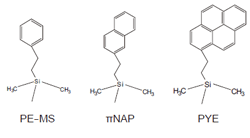What is the difference between column pre-filter and guard column?
Q26. What is the difference between a column pre-filter and a guard column?
- Column pre-filter (④)
Connect between pump and injector to eliminate solid impurities in mobile phase. - Guard column (⑥)
Connect between injector and analytical column to protect the analytical column from impurities and adsorbing compounds in sample. Please refer to Technical Information, Guard Column Selection and Use (PDF 998 KB)

Q27. How do I pre-treat samples?
Refer to Technical information, Sample Pretreatment for HPLC (PDF 1,090 KB)
Q28. How should I choose internal standards?
Ideal internal standards have the following attributes:
- The peak of the internal standard is near target compound peaks, but does not overlap.
- Does not produce tailing peaks or adsorb to packing material.
- Easy to procure at a low price.
- Has good chemical stability.
Methyl to Butyl p-Hydroxybenzoate are widely used in the Japanese Phamacopoeia.
Q29. How should I select a stationary phase?
Generally, we recommend that users start with a C18 analysis, and choose another phase if necessary based on those results. For example, if there is good retention, but separation is poor, try using Cholester for isomer analysis. Alternatively, retention is poor, try a column designed to retain hydrophilic compounds, such as PBr (reversed-phase) or HILIC.

Q30. What is the difference between π-π interaction columns (PE-MS, πNAP, PYE)?
The main difference is the strength of the π-π interaction. πNAP has a much stronger interaction (and therefore retention and possibility of separation) than phenyl columns like PE-MS. Likewise, PYE has a much stronger interaction than πNAP. However, PYE is actually too strong for some types of analysis, so we recommend that customers considering this column try πNAP first.
There is also some difference in planar selectivity, due to the difference in planar size (see structures below).











